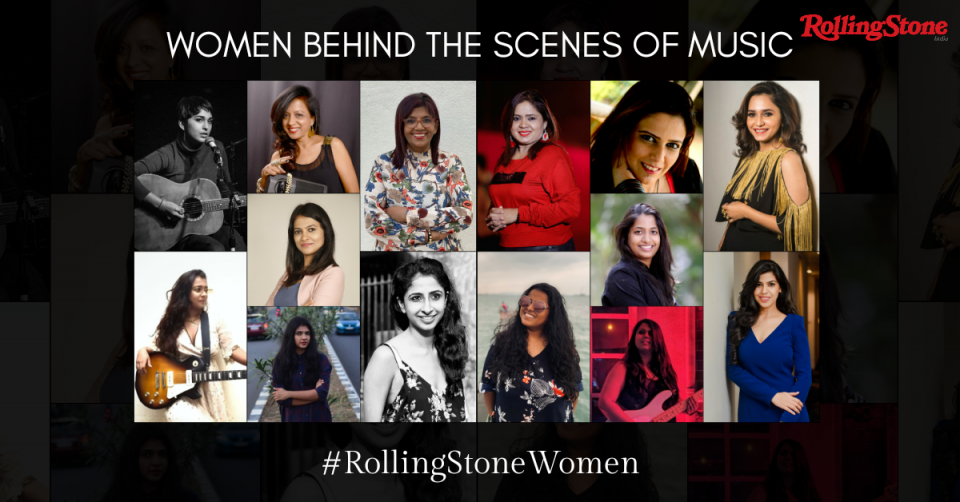Women Behind the Scenes of Music: ‘Let’s Create a Space for All’
From artist managers to audio engineers to music directors to lyricists and instrumentalists, women get upfront about being at the back of it all
It’s 2020 and women are breaking ground old and new in India. When it comes to the music business, there couldn’t have been a better time to join the dynamic industry, where women are increasingly leading the way, whether from the frontline or behind the scenes. There’s a palpable shift in how women are navigating and represented in the music industry as they continue to champion many wins to be celebrated.
While the list of women artists in Bollywood and indie that you might discover on streaming platforms is expanding steadily, there’s a growing breed of leaders in the fields of business, production, management and legal that are making their presence felt. Last year saw lawyer Priyanka Khimani (Co-founder and lead partner of Anand & Anand & Khimani) kickstart Women In Music’s India chapter as the founding chairperson while Indian-American rapper Raja Kumari judged India’s first hip-hop reality show and playback artist Neha Kakkar is officially TikTok India’s most popular creator. But recent statistics from across the ocean — in absence of our own — call for action on the way ahead. A report by the USC Annenberg Inclusion Initiative (based on 800 popular songs from 2013 and 2020) revealed that only two percent of charting songs were produced by women while 12 percent of songwriters on the charts were women. It also found that 25 percent of women often find that they’re the only woman in the recording studio.
Where are the women in the studio?
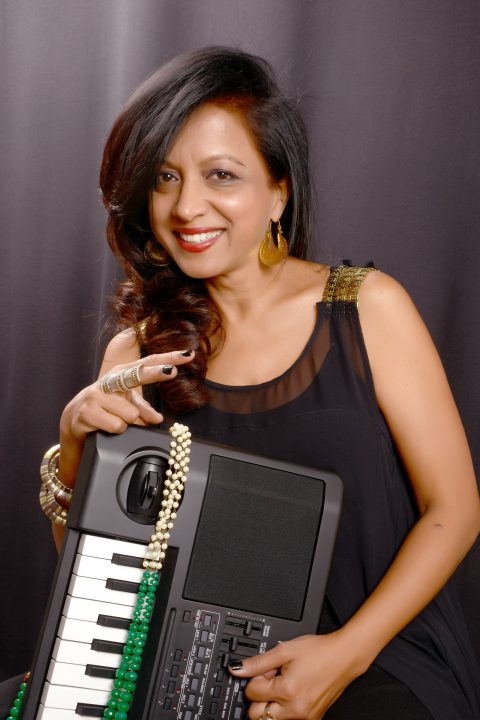
Music director and composer Merlin D’souza
This comes as no surprise but technology is changing the game. Music director and composer Merlin D’souza sees a shifting tide with people turning to produce from within the spaces they’re most comfortable. She emphasizes creating your own opportunity: “Get into your home studio, play your guitar, play your keyboard, sing a song, put a loop on and start producing and put it on SoundCloud, Spotify, YouTube, TikTok or wherever — just put it out there,” says the veteran musician. Percussionist Sappna Desai-Mane, 38, too thinks that the Internet has changed how musicians, particularly women, build and find networks when they don’t see each other represented in a room. “When I started playing the drums, I remember there was only one fantastic female drummer called Yasmin Claire Kazi from Bengaluru. But now with the growth of the Internet, supportive musicians and a change in the outlook towards female drummers, the visible number has definitely increased,” says Desai-Mane.

Percussionist Sappna Desai-Mane. Photo: Courtesy of Desai-Mane
Speaking of which, the gender ratio behind the scenes of the music industry is still definitely more or less skewed. Statistics from a study conducted between 2016 to 2018 by international arts collective FEMWAV revealed the ratio of women composers and producers to male composers and producers in Bollywood was 1:80. While on the Indian indie front (between 2015-2018), the number was 1:71. The numbers are dismal on the management front too with women making up 10 percent of artist managers in the industry. Women professionals corroborate these numbers while also telling us that their presence itself marks a shift in the industry.
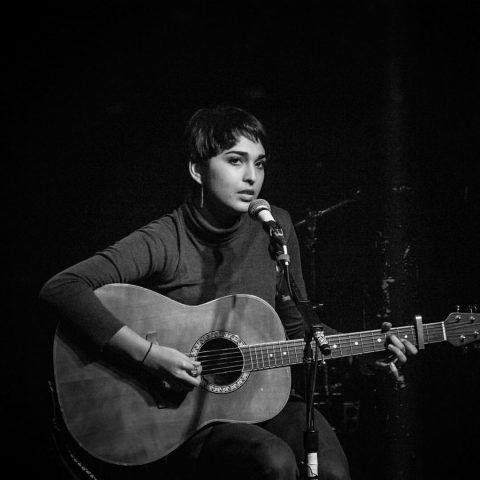
Audio engineer/singer-songwriter Aria Nanji
Audio engineer/singer-songwriter Aria Nanji, 24, feels the culture of equal opportunity at the workplace has to be promoted. “Island City Studios (my main workplace) strongly fosters a very inclusive and accepting environment, so I never have to feel like I need to work harder than my male counterparts to prove myself. I am lucky to be in an environment where gender doesn’t affect the way my peers or clients perceive my ability,” she says. Nanji cites lack of numbers in the field due to variables of the work culture such as the working hours (late nights and early mornings) and the acquirement of strong technical knowledge in a stream that’s not the most conventional. In the Nineties though, D’souza tells us women were virtually non-existent in the studio. Bollywood lyricist Priya Saraiya, 35, too admits the numbers are dismal, counting her counterparts on her fingertips. “We’re writing our bit and also waiting to welcome more female writers,” says Saraiya, who has penned songs such as “Jeena Jeena” (Badlapur, 2015) and “Sun Sathiya” (ABCD 2, 2015) among others.
When music instruments are assigned a gender!
“Your work talks,” says Hiral Viradia, a recording engineer/musician at A.R. Rahman’s Panchathan and YM studios in Chennai. With age and gender both forming a nexus on the bias front, the 23-year-old says she is now so used to the look of a slightly perplexed musician when they enter the studio that it has stopped bothering her. “Artists have looked at me apprehensively and said, ‘Oh, I haven’t been recorded by a female sound engineer before.’ That ‘Oh’ comes across a lot — when they can’t believe you produced your own track or that you may be more skilled than them. It’s very telling,” she says, observing that skepticism always precedes normalization and acceptance. “Industry only doubts you before you do your work. But once that starts talking, then I would say the industry is very kind to you,” she says.
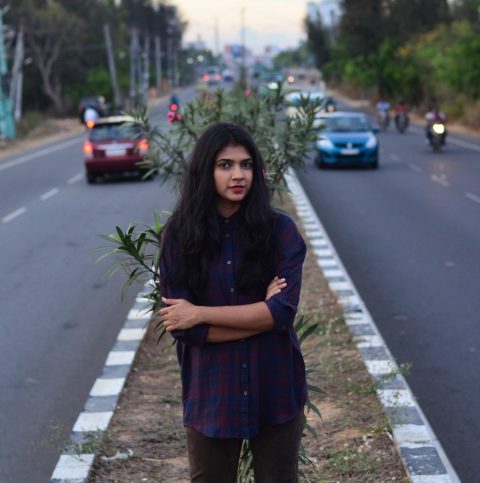
Recording engineer/musician Hiral Viradia. Photo: Courtesy of Viradia
Even instrumentalists haven’t been able to escape being stereotyped, whether they play the bass or drums. “Instruments are given a gender,” says bassist Pooja Mazoomdar, 29, telling us that the general belief she encounters is that “a guy will be able to deliver better.” Desai-Mane brings up deconstructing the notion of ‘women and glamor’ and how she genuinely enjoys changing people’s perception of what a solid drummer should look like as she does the usual heavy lifting and assembles and dismantles her drum kit. “I’ve been a drummer for 15 years now,” she says.
Women managers are a growing breed

Artist manager Lily Ahluwalia. Photo: Courtesy of Ahluwalia
A veteran artist manager in Bollywood, Lily Ahluwalia, sees a waning dominance of men in the field of artist management. “Even the biggest talent agencies have a bigger employee rate of females than men. Most leading film actors also have female managers. So, it’s a perception that it’s a male dominated industry,” says Ahluwalia, who, in her two-decade-long career in entertainment, managed artists such as Manchanda, Shalmali Kholgade, Priya Saraiya and Clinton Cerejo, among many others.

Artist manager Swetha Shetty. Photo: Courtesy of Shetty
Anu George, 31, tells us that back in 2013, she was the only woman on a three-member artist management team at Mixtape, a Mumbai-based events and talent agency. “Seven years later the team has grown to seven people out of which three are girls,” she says. Swetha Shetty (Founder, Agent S Talent Management, Mumbai), who has managed artists such as Anushka Manchanda and Arjun Kanungo, eyeballs the figure and tells us that 15 years ago, the ratio of male to female artist managers was 90:10. “Back then, there was discrimination such as a female only being allowed to travel with a female artist or a female being accompanied by a male colleague if the event was in a smaller city — now all that has changed. I am surrounded by men all the time, from musicians to artists to clients to vendors and the good part is, I am still the boss. My entourage of men is my responsibility and not the other way round,” she says. Bollywood artist manager Riddhi Modi, 27, who has managed artists such as Shilpa Rao, Ankit Tiwari and Tochi Raina, too sees a lot more women taking on managerial positions in the industry as opposed to five years ago. “Women have been a lot more confident in coming ahead and showcasing their skill,” she says.

Artist manager Riddhi Modi. Photo: Courtesy of Modi
Ahluwalia notes that managers can also bring about a balance in the pay gap by looking at the commercial aspects of their role. “The male singers or composers charge a certain fee for their shows. No female artist at par can even closely match that fee [right now],” she says.
When you’re expected to act like be a man

Artist manager Vibhuti Patel. Photo: Courtesy of Patel
A major factor that emerged in these conversations about numbers was a gender bias — a resisting notion that continues to permeate the industry even as the women constantly challenge it. As Vibhuti Patel (Director, Magictouch Entertainment, a talent firm based in Mumbai) says, “We work really hard to get a show for an artist.” Patel, 43, cites how pure leadership displayed by women in this field is often understood as a kind of machismo. “My friend used to tell me that ‘you’re a man’,” she says, telling us that unconsciously (because who said women can’t be leaders?) operating under such an image created more acceptance for her position as a manager in the late Noughties. D’souza still gets calls from clients who think she’s a man, detecting a sheepish tonal shift when they hear her voice and have to correct themselves.
Invest in education, mentorship and learning the business
“You need to have an identity,” says Patel, who has managed artists such as Akasa Singh and Abhinanda Sarkar, pushing women to identify their unique strengths and take advantage of it. The artist manager began her journey as a talent coordinator for reality shows in 2010 (when it wasn’t so easy to directly contact artists) and being the focal point of contact paved the way for her into artist management. Saraiya, too, emphasizes recognizing trends and riding their wave, deeming no opportunity or chance as big or small. “Art always finds an audience,” she says, especially on the digital platform. “Bollywood, today, is always looking for relevant content. For example, a lot of independent songs are becoming a part of mainstream movies, web shows are gaining popularity, the subjects of films are becoming more important than its faces. Keep writing,” Saraiya says.

Lyricist Priya Saraiya. Photo: Courtesy of Saraiya
D’souza hearkens back to the early Nineties when music directors would question her decisions in the studio and act as roadblocks to accessing better equipment that they thought she had no business using — since she was a ‘girl.’ It made her even more determined to work with a wide range of directors and before she knew it, the clients came calling in because they knew she was the one working the project. “Start naming your work and giving yourself titles,” she says because it leads to a domino effect where people say, “Oh, she’s doing it? I can do it too.”
This creates representation through exposure and helps to reverse on-going logistical issues (among others) such as programming line ups and touring. Believe it or not, as Mazoomdar is witness, being a woman in a ‘boys club’ still creates situations where women aren’t picked for travelling assignments. “If we had an equal amount of women instrumentalists or even a few female musicians along with the guys, agencies would be more open to distributing logistics, managing their budgets and opening up more opportunities,” she says.
George, who has managed artists such as Shaa’ir + Func and Voctronica, sees things definitely changing for the better. “The focus on gender balance exists a lot more now. Especially when it comes to event lineups. From our end, I don’t think the investment differs, I think the problem is the lack of exposure to the options available when we are programming line ups and the lack of opportunities for young girls to build their confidence,” she says. This is why women-led mentorship, education and networks play a major role in the road towards equity in the music industry. D’souza also underlines collaboration as a helpful part of the journey, especially when first starting out. “Have safety in numbers if you don’t want to play the solo lead. Collaborate and learn till you get the confidence to do it on your own,” she says.
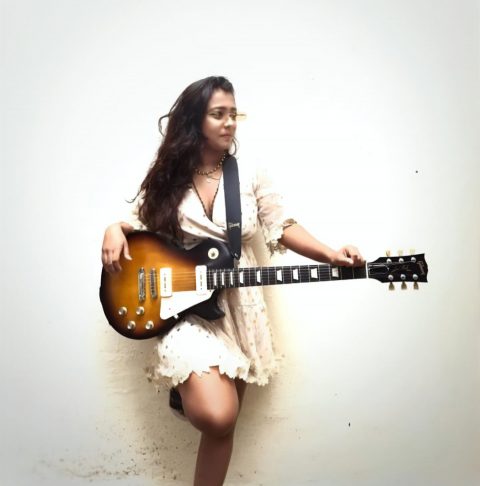
Multi-instrumentalist Esani Dey. Photo: Courtesy of Dey
Multi-instrumentalist Esani Dey, 20, thinks that the best and most formative thing musicians can do for themselves is finding a place where they can create while surrounding themselves with people who have an understanding of the craft “because they understand the hunger of being a musician.” She also believes that there’s no eligibility of age when it comes to expanding one’s skill set. “I’m still being mentored by my dad (veteran bassist Sujoy Dey) and the musicians I work with. The learning process is neverending,” she says, expressing a want to pass on and share her chops, especially with women and girls as she wants to see more female instrumentalists join the fore.

Artist manager Anu George. Photo: Kaamna
“The one thing that would help integrate more women in this industry is the availability of safe, reliable and affordable transportation,” says George, drawing a connection to party culture as it rides off the back of the music industry. She also emphasizes surrounding oneself with people who will look out for you, people you can go to when feeling uncomfortable or unsure. “Always wear a look that you will tolerate no bullshit,” she says while maintaining that the music space is open and that there is opportunity for all who wish to join the business.

Dolly Rateshwar, The Dharavi Dream Project)
Dolly Rateshwar (Co-founder, The Dharavi Dream Project) thinks it’s time more people in the music business stepped forward as enablers. “Communities and platforms, where budding talent is given due recognition and provided with opportunities of expression as well as resources, have seen the rise of untapped talent,” says the 35-year-old, correlating how an enabling environment for hip-hop in India has led to many artists becoming a voice for their communities and how the same can be translated as a model in the industry as well.

Lawyer Priyanka Khimani. Photo: Courtesy of Khimani
Going ahead, a positive sign is also how a new wave of artists are safeguarding their interests. Khimani says, “Everybody is savvy, wants to know more and is actively seeking advice — whether they’re educating themselves or it’s their agents or their managers [reaching out].” The 32-year-old advocate, who specializes in IP law, has a growing roster of women clients and has represented the likes of Lata Mangeshkar, Alisha Chinai, Shreya Ghoshal and Shruti Haasan, among others. She notes that on the legal front too, women form a strong part of the workforce, whether working as in-house counsels or as entertainment attorneys. “I often see more women than men,” she says.
There’s power in representation
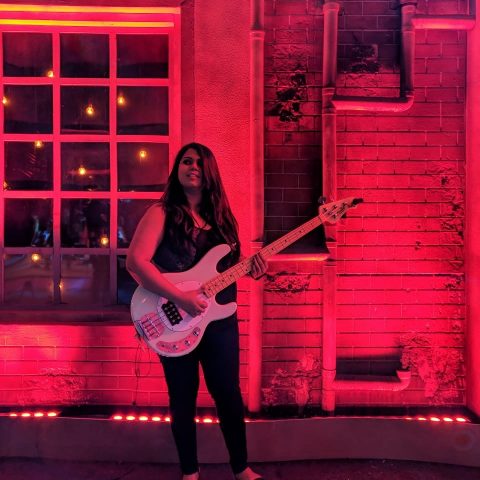
Bassist Pooja Mazoomdar. Photo: Courtesy of Mazoomdar
For most women in the Indian music industry, they’re the representation they’ve been waiting for. “I started off in Gujarat with no musical background. I studied music and made my own way to where I wanted to be,” says Viradia, challenging anyone who wants to duel with her skill in the studio. She feels the need is to create a space for all instead of remarking on the rarity of the few. And why does representation matter even more than just numbers? Mazoomdar takes us back to flipping through the pages of Bombay Times while wanting to make a foray into music. “I remember seeing an article on (bassist) Mohini Dey in the paper and thinking ‘Oh, girls do play this instrument!’ It was really inspiring to see her image in the paper when I had not heard of any other female bassists in the country,” she says. Women have made amazing strides in music over the past few decades and it’s time there was a place at the table for all. There’s still work to be done and Nanji says, “The industry should [continue to] work towards equality.”



